A Unified OFDM-ISAC Signal Generation Architecture in W-Band via Photonics-Aided Frequency Multiplication and Phase Noise Mitigation
Abstract
1. Introduction
2. System Model
3. Simulation of the Proposed System
4. Communication Performance Analysis
4.1. BER Performance Comparison
4.2. Constellation Diagram Comparison
4.3. EVM and SNR Performance Comparison
5. Sensing Performance Analysis
6. Conclusions
Author Contributions
Funding
Data Availability Statement
Conflicts of Interest
References
- 3GPP. Available online: https://www.3gpp.org/release-17 (accessed on 10 June 2022).
- ITU. Future Technology Trends of Terrestrial International Mobile Telecommunications Systems Towards 2030 and Beyond; Rep. ITU-R M.2516-0; ITU: Geneva, Switzerland, 2022. [Google Scholar]
- Dong, B.; Jia, J.; Tao, L.; Li, G.; Li, Z.; Huang, C.; Shi, J.; Wang, H.; Tang, Z.; Zhang, J.; et al. Photonic-based W-band integrated sensing and communication system with flexible time-frequency division multiplexed waveforms for fiber-wireless network. J. Light. Technol. 2024, 42, 1281–1295. [Google Scholar] [CrossRef]
- Dong, B.; Jia, J.; Li, G.; Shi, J.; Wang, H.; Zhang, J.; Chi, N.; Wang, P. Demonstration of photonics-based flexible integration of sensing and communication with adaptive waveforms for a W-band fiber-wireless integrated network. Opt. Express 2022, 30, 40936–40950. [Google Scholar] [CrossRef] [PubMed]
- He, J. A Grouped-ANN equalizer for the rotated PS 64QAM OFDM in W-band ROF system. IEEE Photonics Technol. Lett. 2024, 36, 1165–1168. [Google Scholar] [CrossRef]
- Liu, C.; Zhou, W.; Yu, J. Photonics aided vector millimeter-wave signal generation without DAC at W-band. Opt. Fiber Technol. 2022, 70, 102883. [Google Scholar] [CrossRef]
- Zhao, L.; Zhang, R.; Zhou, W.; Shen, S.; Xiao, J.; Chang, G.; Yu, J. Probabilistic shaping with pre-equalization in W-band MM-wave communication system with heterodyne coherent detection. Opt. Fiber Technol. 2021, 61, 102345. [Google Scholar] [CrossRef]
- Chen, L.; Luo, J.; Tang, Z.; Xi, Z. Integration system of photon-assisted W-band millimeter wave wireless communication and free space optical communication based on OFDM signal transmission. Opt. Fiber Technol. 2019, 52, 101973. [Google Scholar] [CrossRef]
- Zhao, L.; Shiu, R.-K.; Zhou, W.; Zhang, R.; Shen, S.; Li, Y.; Yu, J.; Chang, G. Nonlinear compensation in W-band MM-wave communication system with heterodyne coherent detection. Opt. Fiber Technol. 2020, 54, 102099. [Google Scholar] [CrossRef]
- Liu, J.; Bian, C.; He, W.; Yang, X.; Wei, Y.; Zhang, Y.; Zhang, L.; Wang, C.; Wang, K.; Zhou, W.; et al. W-band photonics-aided OFDM system integrating sensing and communication with phase noise suppression scheme. Opt. Laser Technol. 2025, 180, 111432. [Google Scholar] [CrossRef]
- Yin, L.; He, J. Modulated-symbol domain matched filtering scheme for photonic-assisted integrated sensing and communication system based on a single OFDM waveform. Opt. Lett. 2024, 49, 2153–2156. [Google Scholar] [CrossRef] [PubMed]
- Song, R.; He, J. OFDM-NOMA combined with LFM signal for W-band communication and radar detection simultaneously. Opt. Lett. 2022, 47, 2931–2934. [Google Scholar] [CrossRef]
- Miuccio, L.; Panno, D.; Riolo, S. An energy-efficient DL-aided massive multiple access scheme for IoT scenarios in beyond 5G networks. IEEE Internet Things J. 2022, 10, 7936–7959. [Google Scholar] [CrossRef]
- Lei, M.; Hua, B.; Cai, Y.; Zhang, J.; Zou, Y.; Tong, W.; Liu, X.; Fang, M.; Yu, J.; Zhu, M. Photonics-aided integrated sensing and communications in mmW bands based on a DC-offset QPSK-encoded LFMCW. Opt. Express 2022, 30, 43088–43103. [Google Scholar] [CrossRef] [PubMed]
- Bai, W.; Li, P.; Zou, X.; Zhong, N.; Pan, W.; Yan, L.; Luo, B. Photonic super-resolution millimeter-wave joint radar-communication system using self-coherent detection. Opt. Lett. 2023, 48, 608–611. [Google Scholar]
- Yu, X.; Ye, J.; Yan, L.; Zhou, T.; Zhong, N.; Zhu, Y.; Zou, X.; Pan, W. Photonics-assisted self-interference cancellation for in-band full-duplex integrated sensing and communication transceiver. Opt. Express 2024, 32, 41708–41725. [Google Scholar] [CrossRef] [PubMed]
- Cho, J.; Winzer, P.J. Probabilistic constellation shaping for optical fiber communications. J. Light. Technol. 2019, 37, 1590–1607. [Google Scholar] [CrossRef]
- Lyu, Z.; Zhu, G.; Xu, J. Joint maneuver and beamforming design for UAV-enabled integrated sensing and communication. IEEE Trans. Wirel. Commun. 2022, 22, 2424–2440. [Google Scholar] [CrossRef]

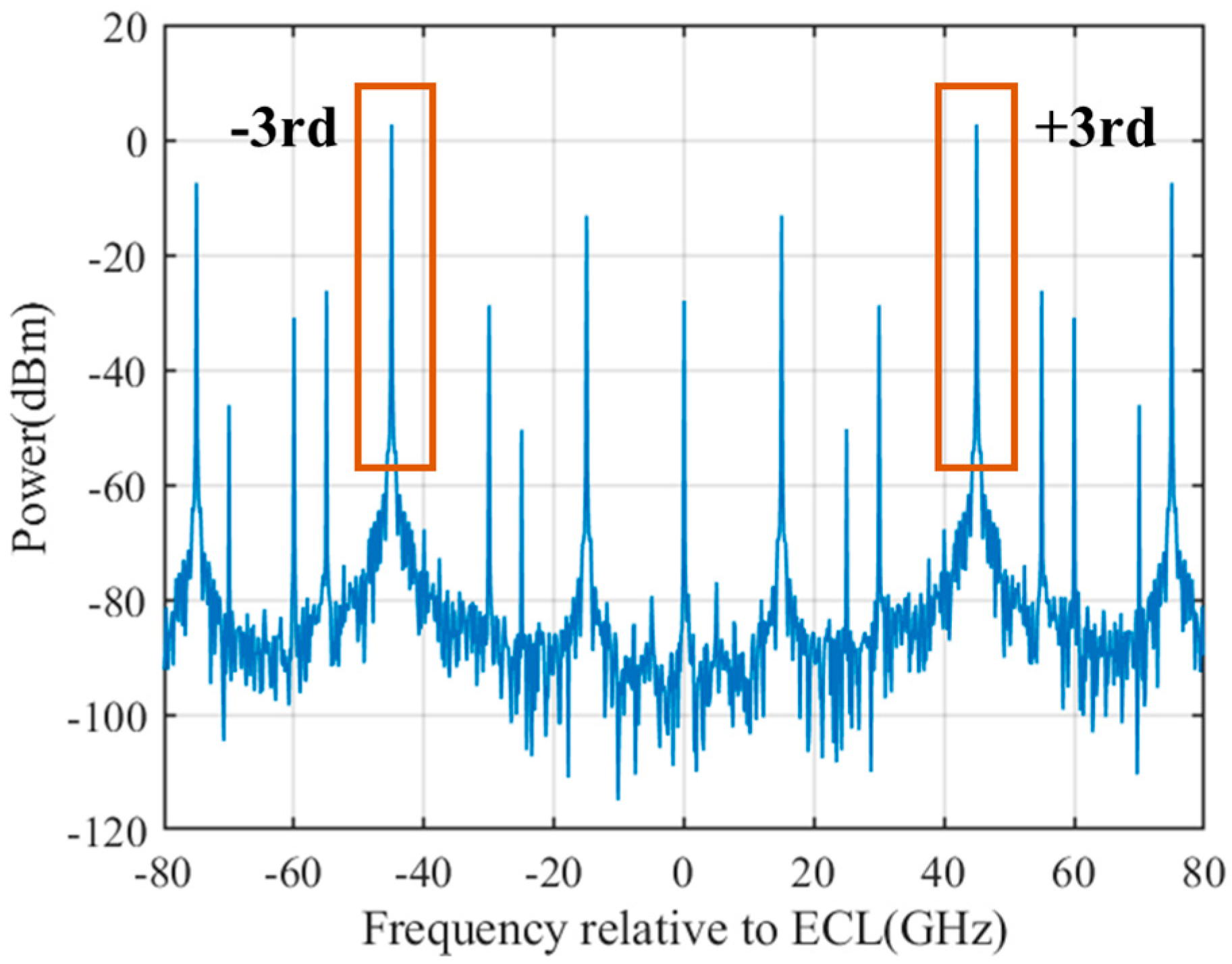

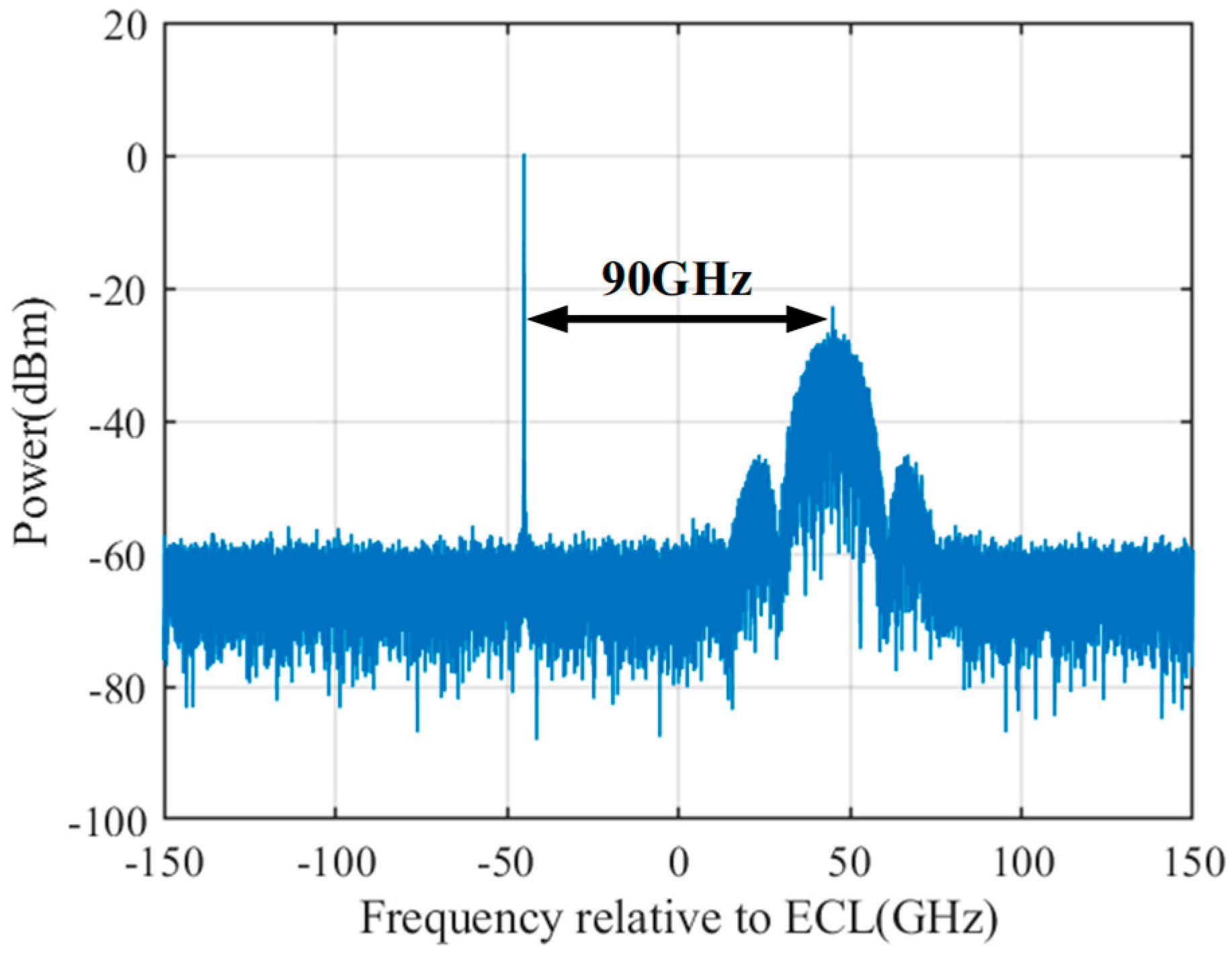
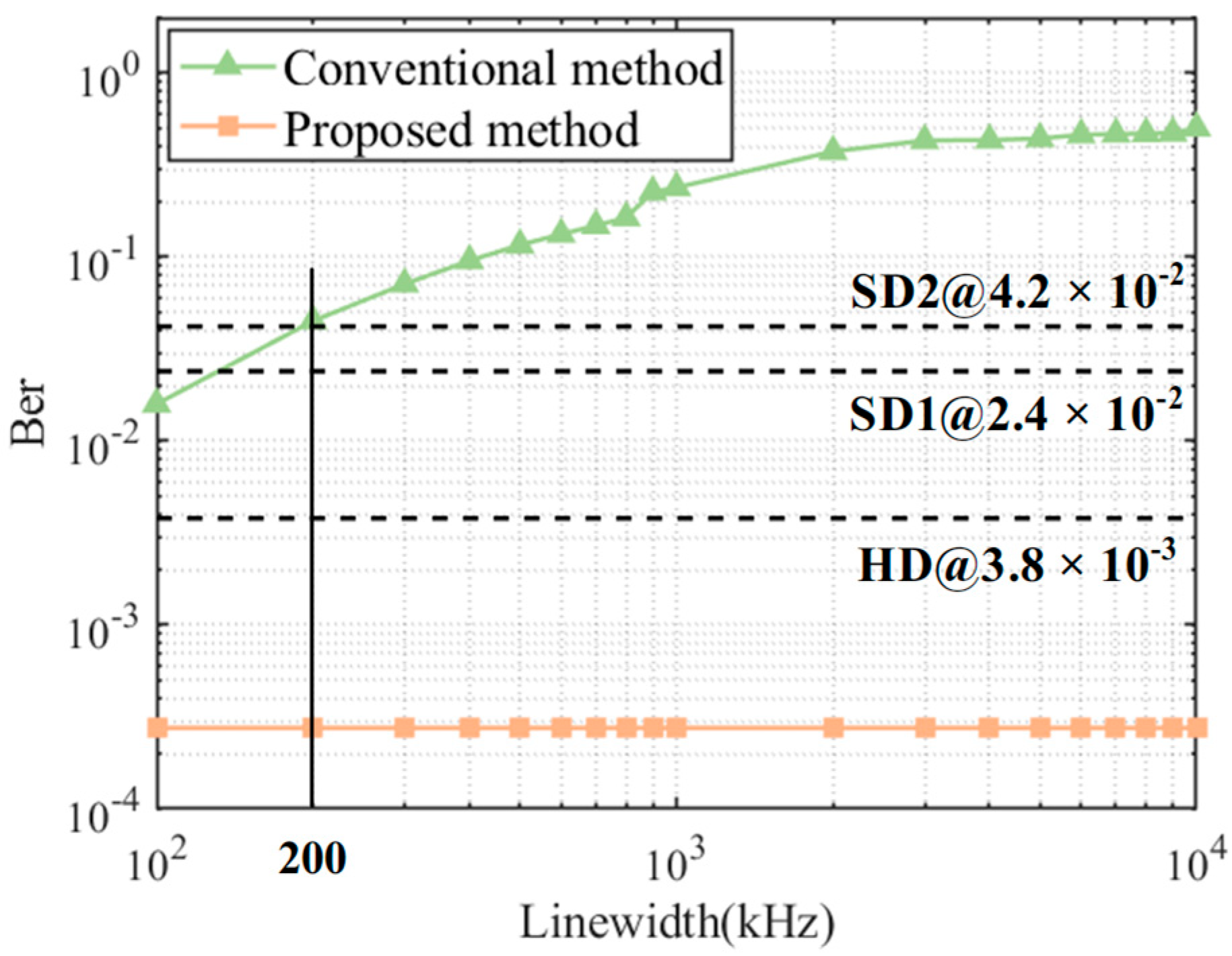
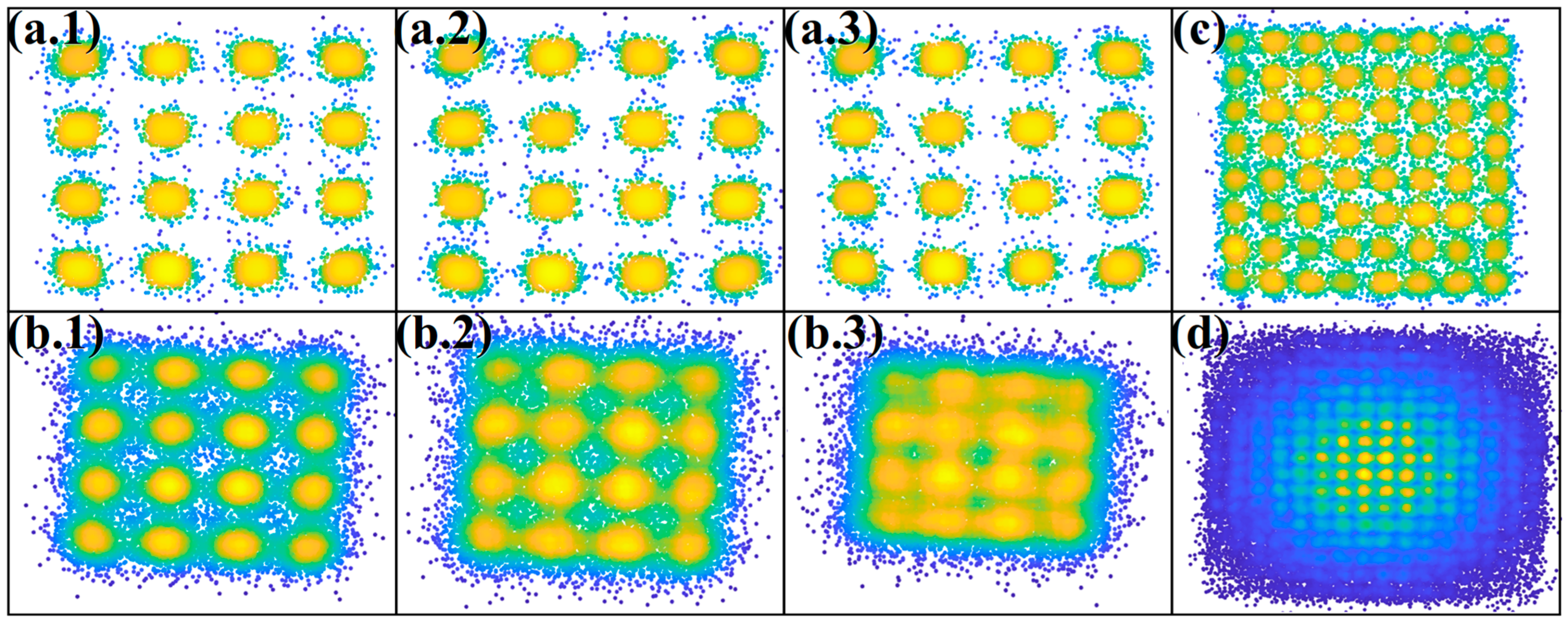
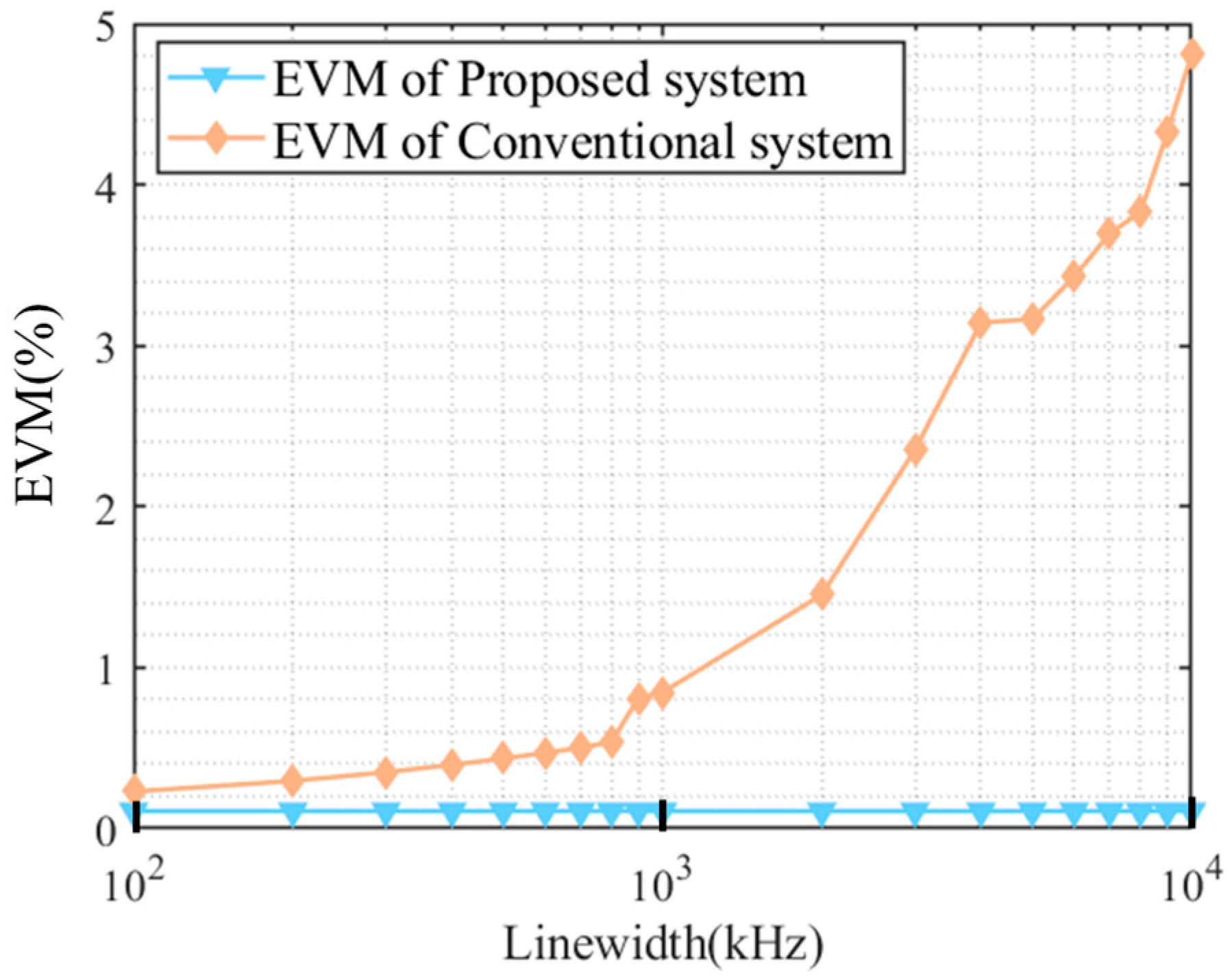
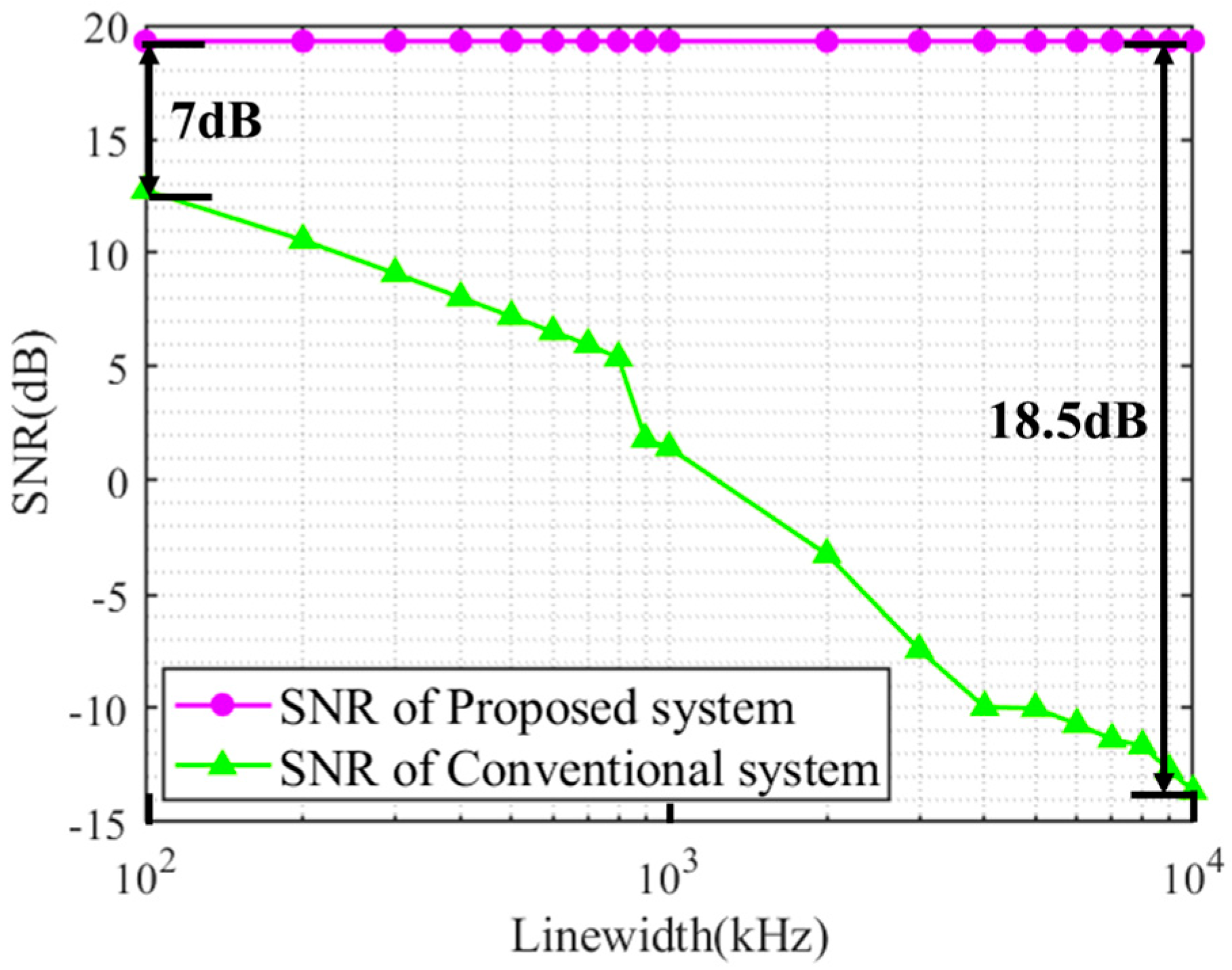


Disclaimer/Publisher’s Note: The statements, opinions and data contained in all publications are solely those of the individual author(s) and contributor(s) and not of MDPI and/or the editor(s). MDPI and/or the editor(s) disclaim responsibility for any injury to people or property resulting from any ideas, methods, instructions or products referred to in the content. |
© 2025 by the authors. Licensee MDPI, Basel, Switzerland. This article is an open access article distributed under the terms and conditions of the Creative Commons Attribution (CC BY) license (https://creativecommons.org/licenses/by/4.0/).
Share and Cite
Deng, K.; Liu, J.; Lu, X.; Chen, J.; Zhou, Y.; Li, W. A Unified OFDM-ISAC Signal Generation Architecture in W-Band via Photonics-Aided Frequency Multiplication and Phase Noise Mitigation. Photonics 2025, 12, 1052. https://doi.org/10.3390/photonics12111052
Deng K, Liu J, Lu X, Chen J, Zhou Y, Li W. A Unified OFDM-ISAC Signal Generation Architecture in W-Band via Photonics-Aided Frequency Multiplication and Phase Noise Mitigation. Photonics. 2025; 12(11):1052. https://doi.org/10.3390/photonics12111052
Chicago/Turabian StyleDeng, Ketong, Jiaxuan Liu, Xin Lu, Jiali Chen, Ye Zhou, and Weiping Li. 2025. "A Unified OFDM-ISAC Signal Generation Architecture in W-Band via Photonics-Aided Frequency Multiplication and Phase Noise Mitigation" Photonics 12, no. 11: 1052. https://doi.org/10.3390/photonics12111052
APA StyleDeng, K., Liu, J., Lu, X., Chen, J., Zhou, Y., & Li, W. (2025). A Unified OFDM-ISAC Signal Generation Architecture in W-Band via Photonics-Aided Frequency Multiplication and Phase Noise Mitigation. Photonics, 12(11), 1052. https://doi.org/10.3390/photonics12111052



